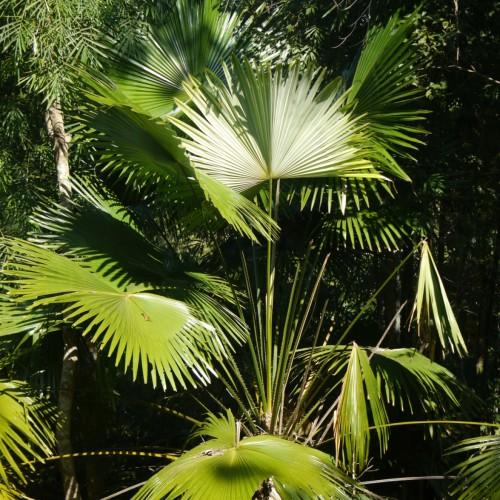
fan palm
Livistona jenkinsiana
Cycle:
Perennial
Watering:
Average
Hardiness Zone:
10 - 12
Flowers:
Flowers
Sun:
full sun,part sun/part shade
Leaf:
Yes
Growth Rate:
Low
Maintenance:
Low
Drought Tolerant:
Yes
Salt Tolerant:
Yes
watering
It is recommended to water the fan palm regularly, about once or twice a week, depending on the temperature and the soil. During colder months, water less frequently, only once every 2 weeks. During warmer months, water more often, about twice a week. The soil should be kept evenly moist but not soggy. If the soil is allowed to dry out too much, the fan palm may suffer from root rot. It is important to check the soil before watering to gauge the moisture level. A general rule of thumb is to use approximately 2-3 liters of water per plant. Make sure to water the entire root area of the plant, including the root ball and any surrounding soil.
sunlight
Fan palm trees (Livistona jenkinsiana) grow best when they receive around 6 hours of direct sunlight every day. They can cope in partial shade, but usually do best in full sunlight all year round. The ideal amount of sunlight for fan palm trees is when they receive direct, unobstructed sunlight in the morning, followed by a partial shade in the afternoon. This pattern of light will allow them to thrive, providing them with the necessary nutrients to grow and prosper.
pruning
The fan palm should be pruned when it reaches the desired height (typically about 10 feet) and should continue to be pruned when the trunk reaches 5-10 cm thick. Pruning back ideally should happen once a year, in the winter when the plant is dormant. Pruning can be done with a sharp pruning shears and should involve trimming back branches to the desired length. Depending on the size, shape and extent of the pruning, it should take between 15 - 60 minutes per tree. Additionally, new shoots and/or dead foliage can be trimmed as necessary throughout the year. Pruning should be done carefully to prevent damage to the plant, and branches should only be trimmed when more than 1/3 of the total length needs to be removed.
